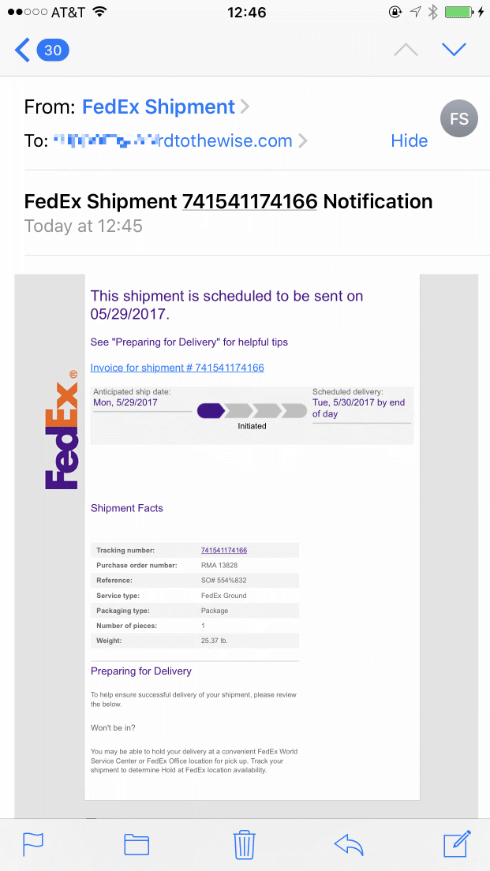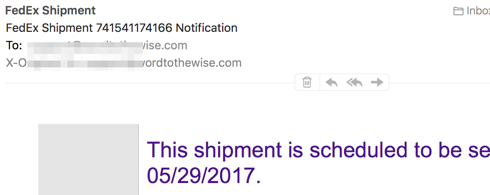Good morning DMARC
I’m thinking I may need to deploy DMARC report automation sooner rather than later.
… and so on, and on, and on for a lot further down the mailbox.
I’m thinking I may need to deploy DMARC report automation sooner rather than later.
… and so on, and on, and on for a lot further down the mailbox.
A number of companies in the email industry have been working on a way to better identify authenticated emails to users. One proposal is Brand Indicators for Message Identification (BIMI). A couple weeks ago, Agari announced a pilot program with some brands and a number of major consumer mail providers. These logos should be available in the Yahoo interface now and will be rolling out at other providers.
Not a new thing, but a nice example just popped up in my inbox on my phone.
But FedEx solved their entire phishing problem when they published a strict p=reject DMARC record, right?
This didn’t come from fedex.com. It came from another domain that looks vaguely like fedex.com – what that domain is doesn’t matter, as the domain it’s sent from isn’t displayed to the user on my phone mail client. Nor is it displayed to the user by Mail.app on my desktop, unless you turn off Mail → Preferences … → Viewing → Use Smart Addresses.
That lookalike domain could pass SPF, it could be used as d= in DKIM signing, it could even be set up with DMARC p=reject. And the mail is pixel identical to real mail from fedex.com.
On my desktop client I can hover over the link and notice it looks suspicious – but it’s no more suspicious looking than a typical ESP link-tracking URL. And on mobile I don’t even get to do that.
SPF and DKIM and DMARC can temporarily inconvenience phishers to the extent that they have to change the domain they’re sending from, but it’ll have no effect on the vulnerability of most of your audience to being phished using your brand.
The US National Cybersecurity Assessments & Technical Services Team have issued a mandate on web and email security, including TLS+HSTS for web servers, and STARTTLS+SPF+DKIM+DMARC for email.
It’s … pretty decent for a brief, public requirements doc. It’s compatible with a prudent rollout of email authentication.